
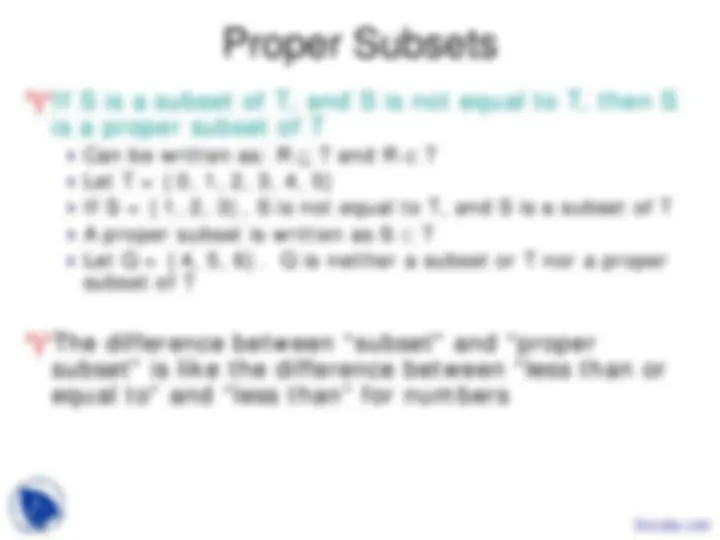
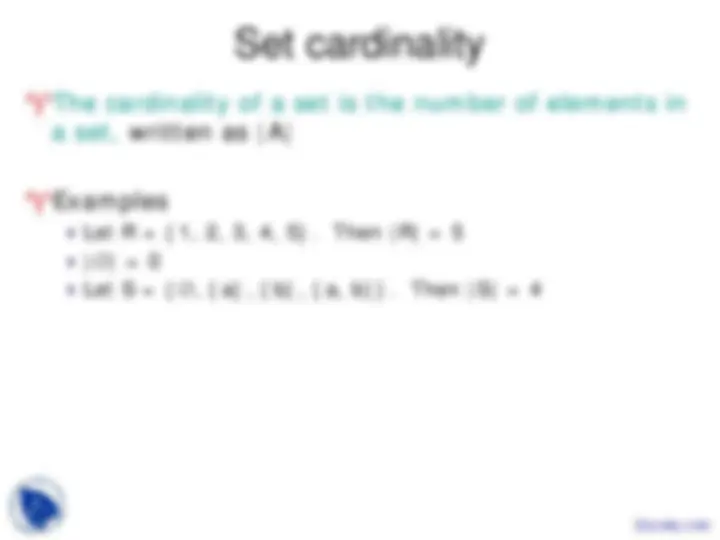
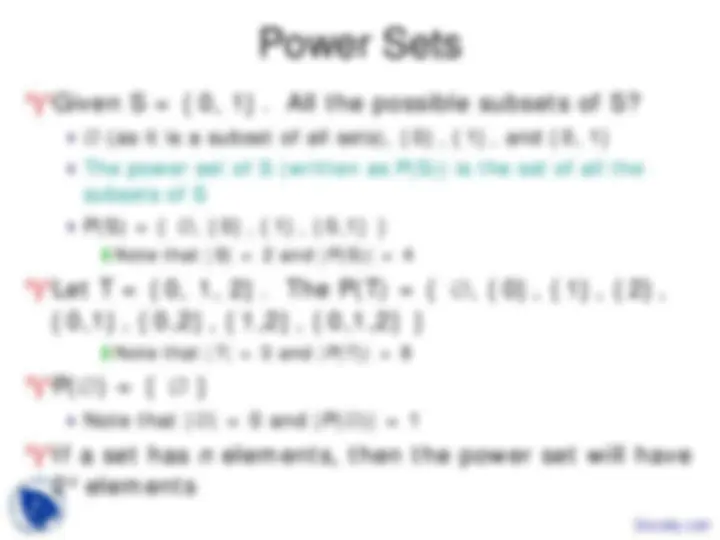
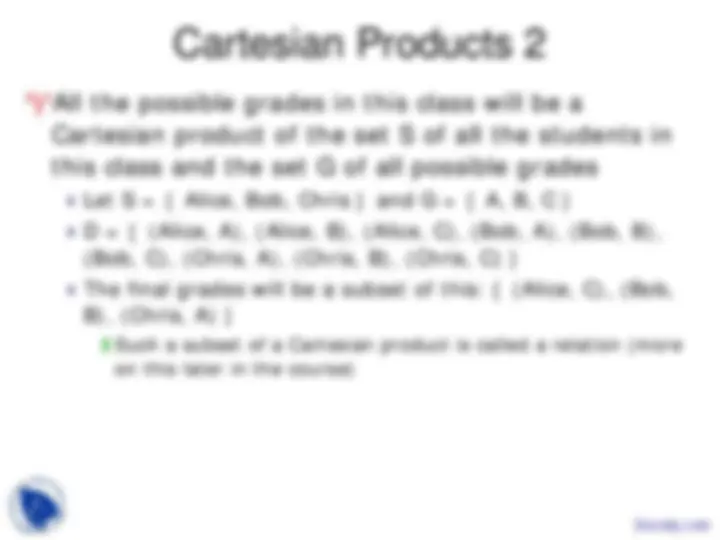
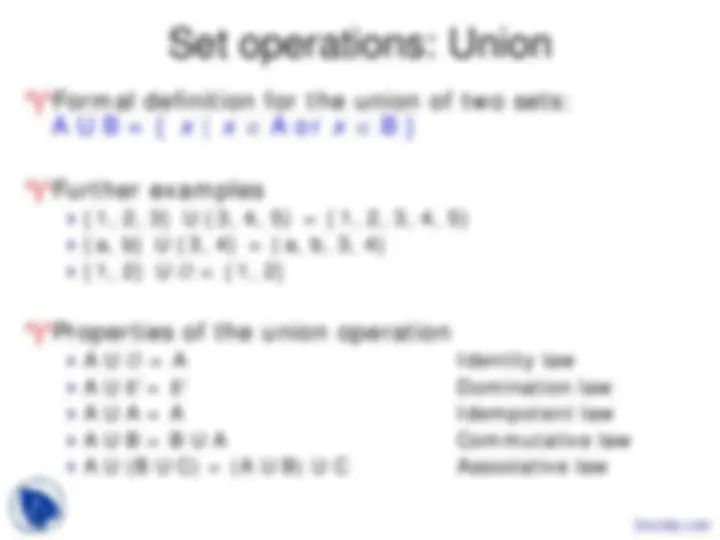
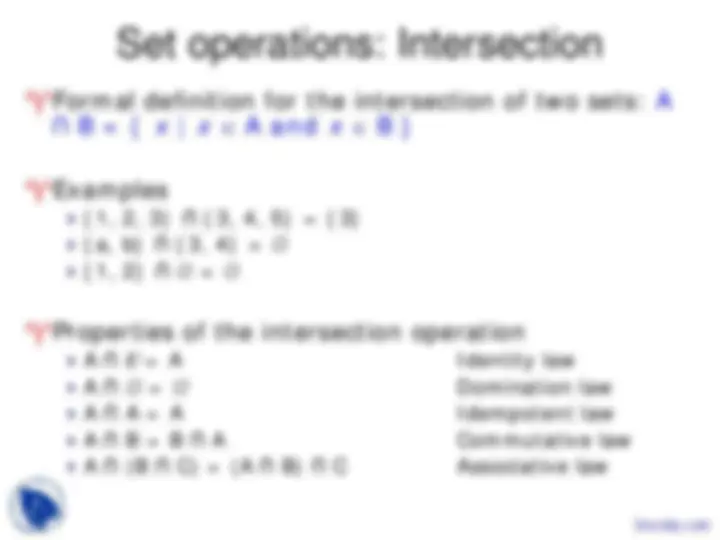
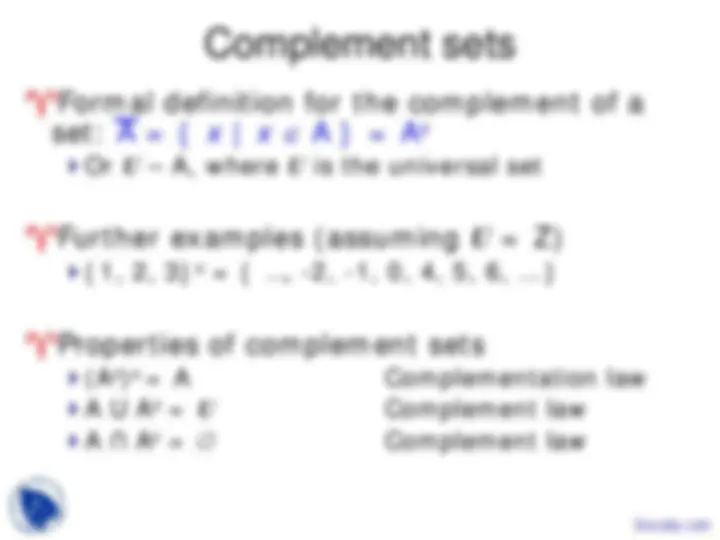
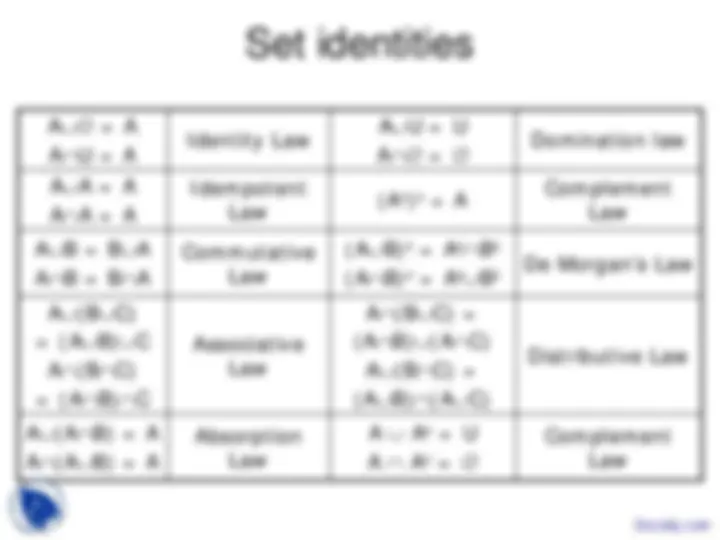
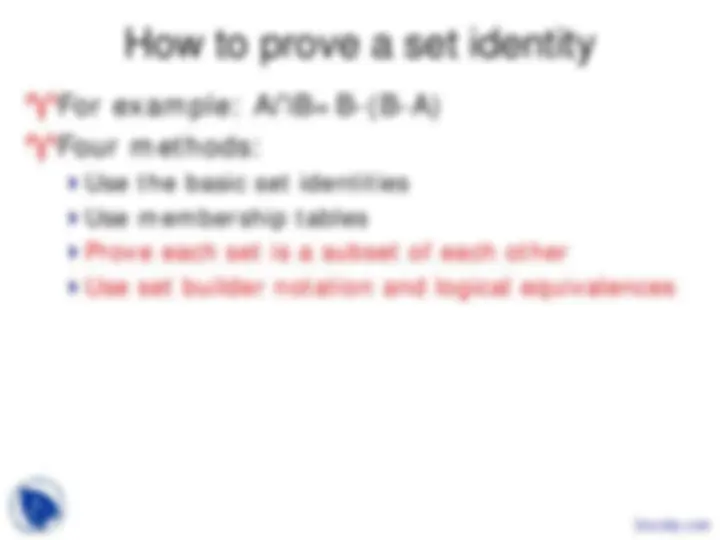
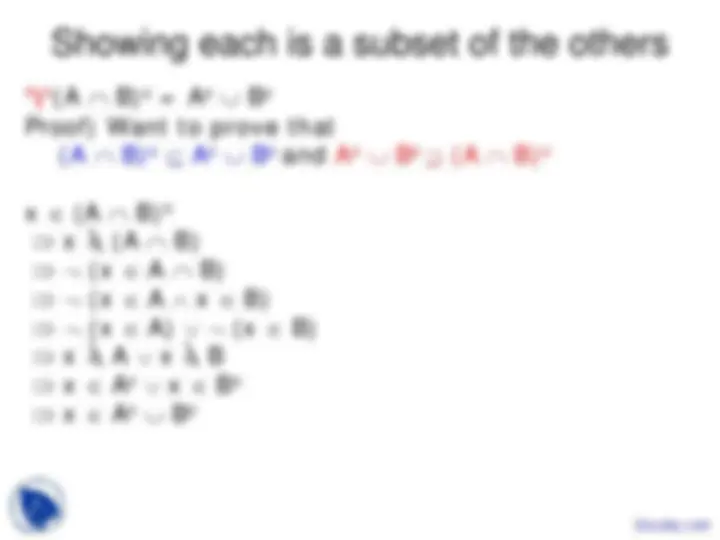
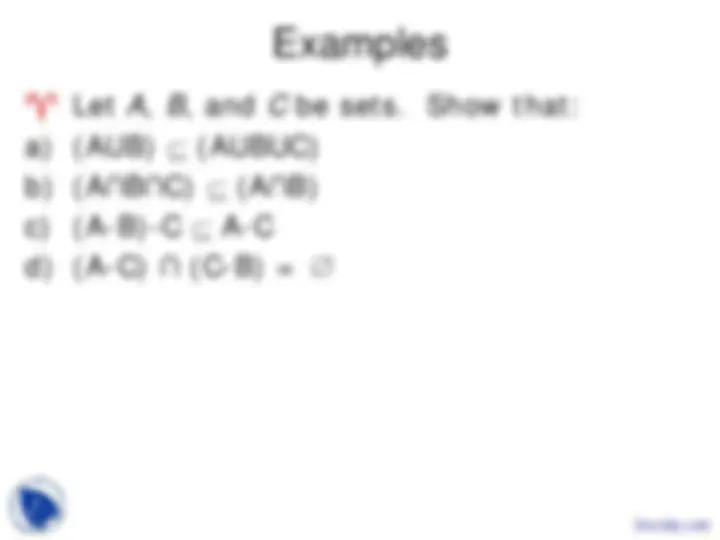
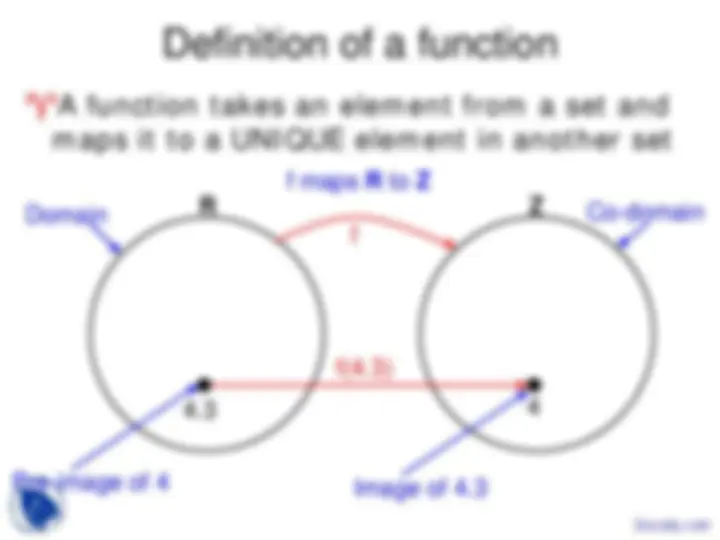
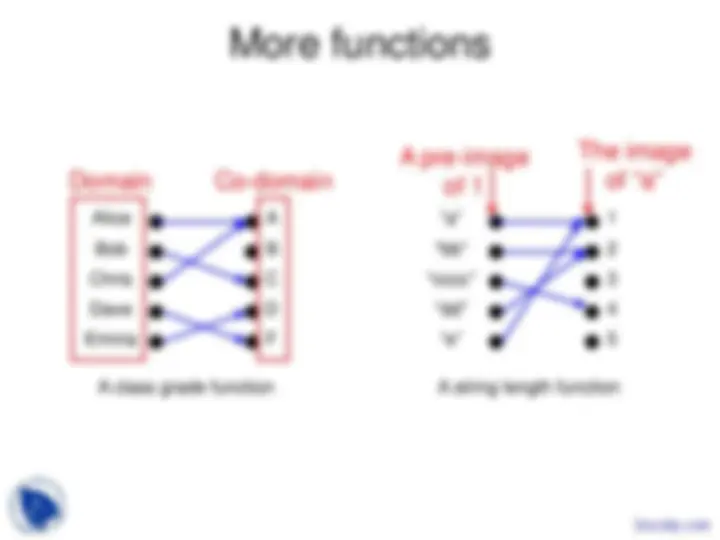
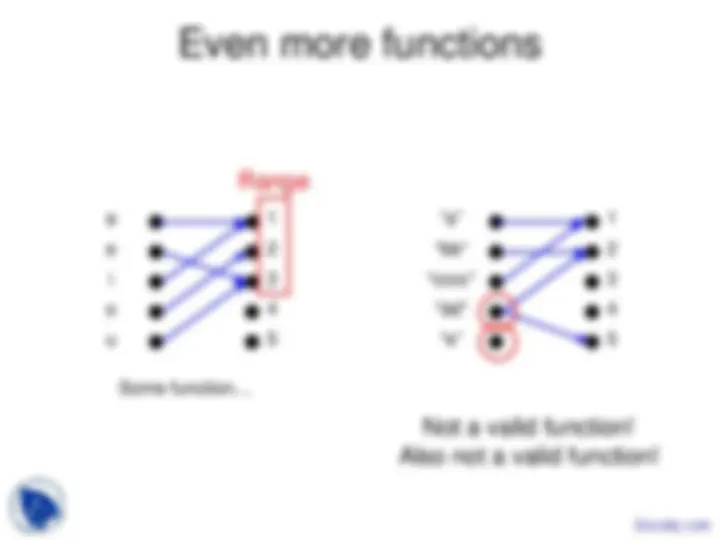
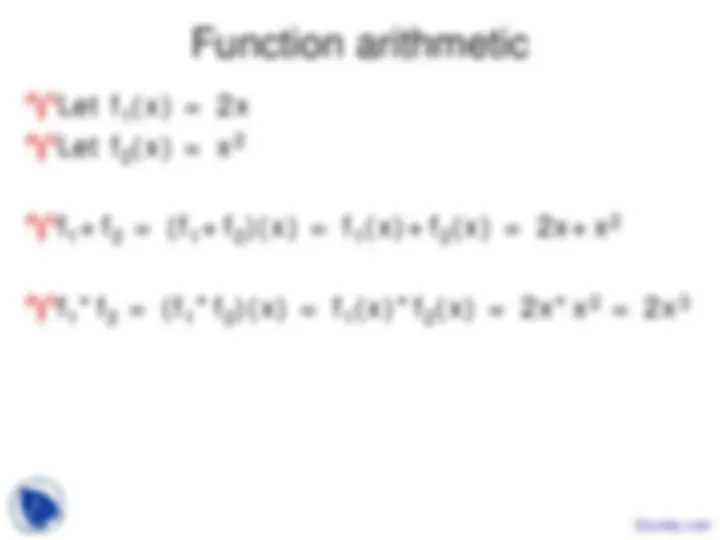
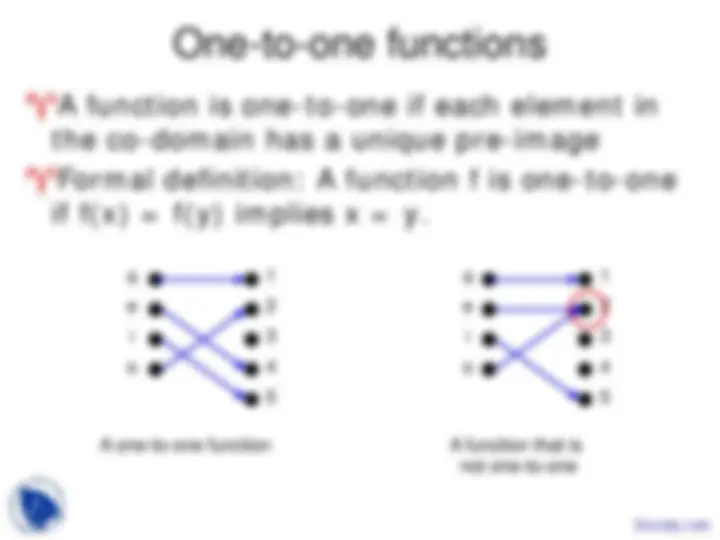
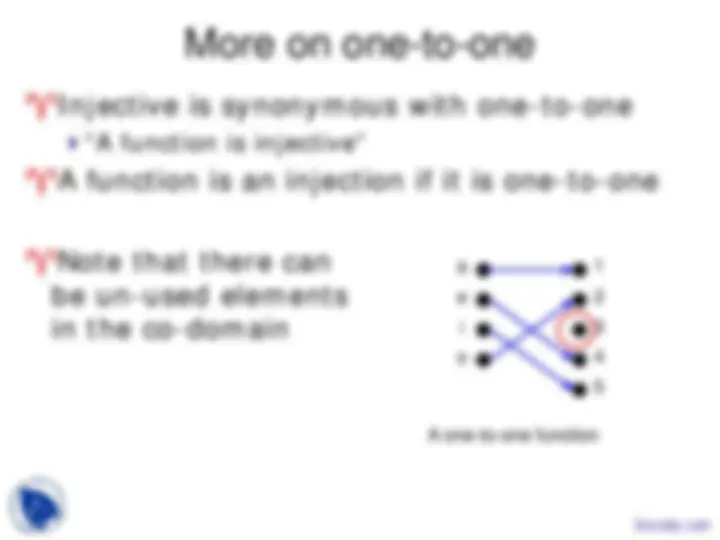
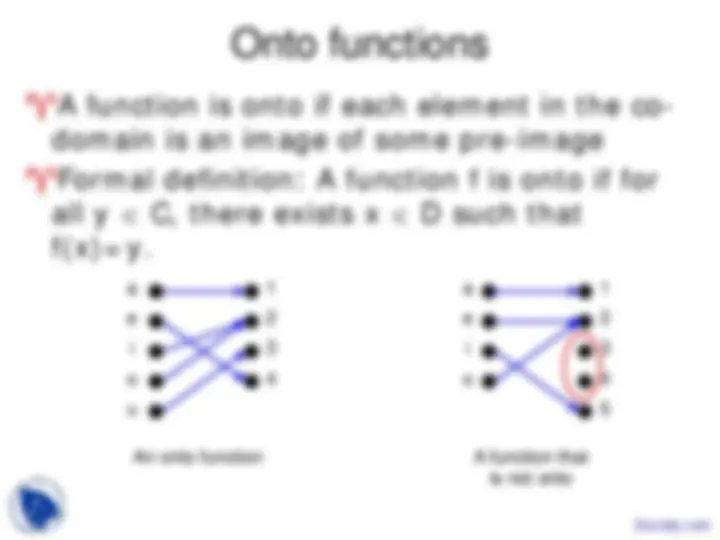
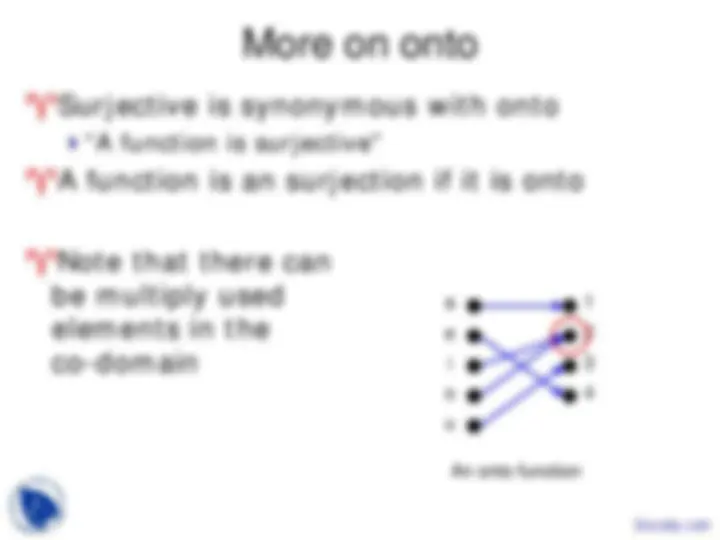
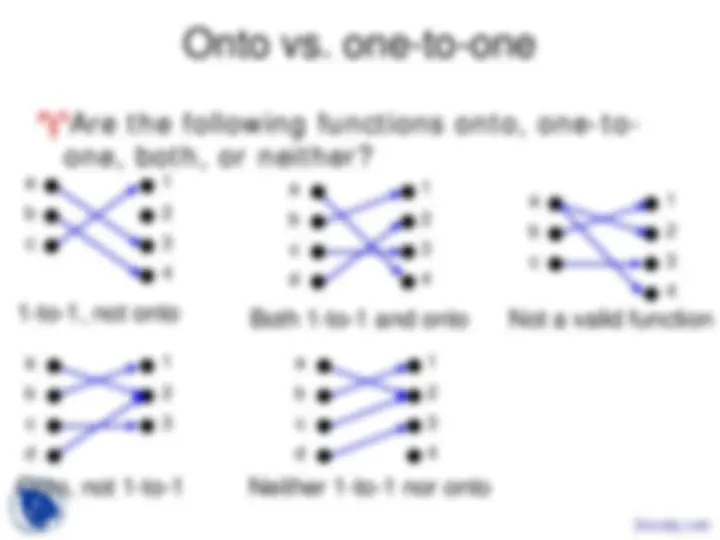
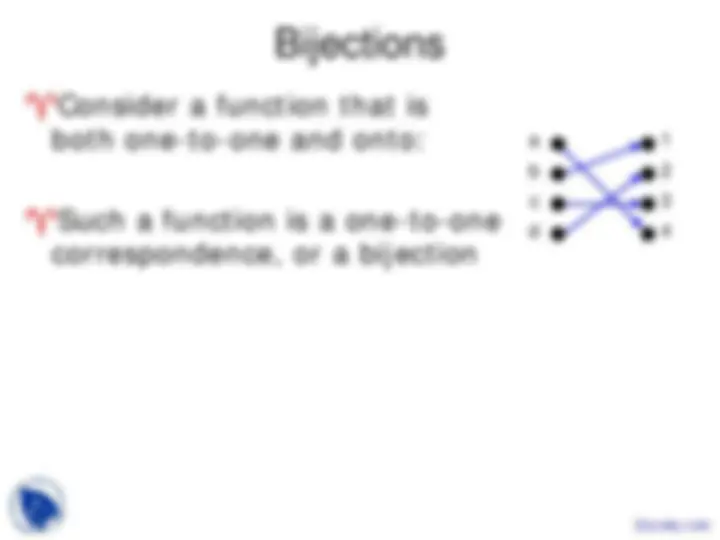
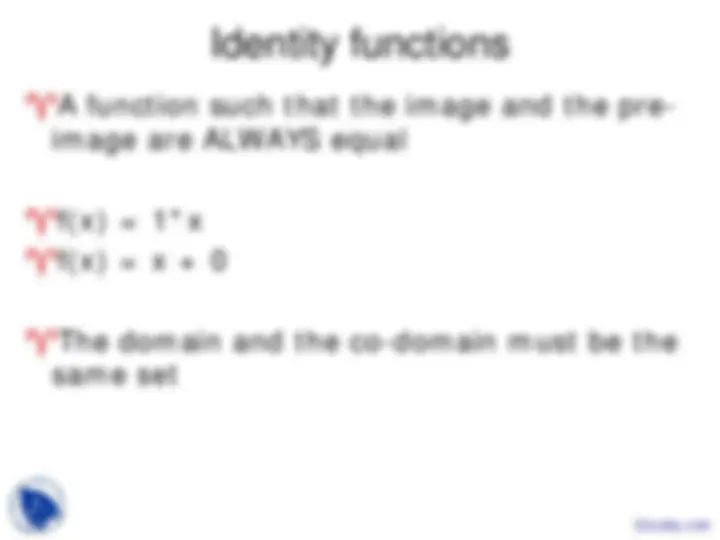
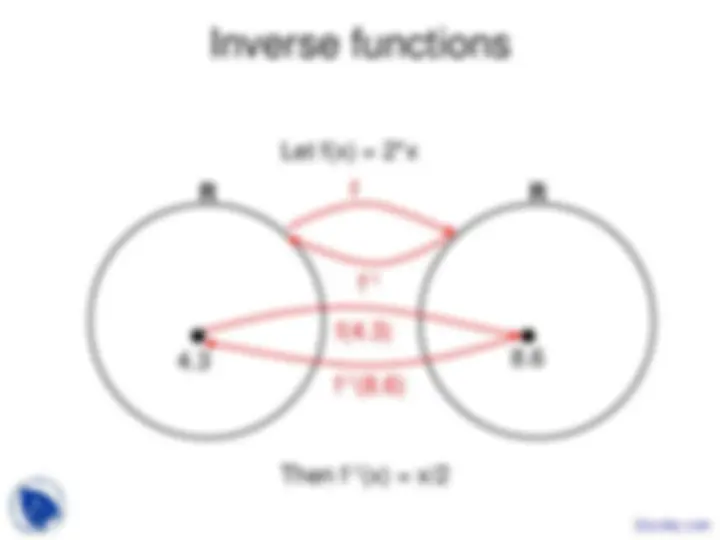
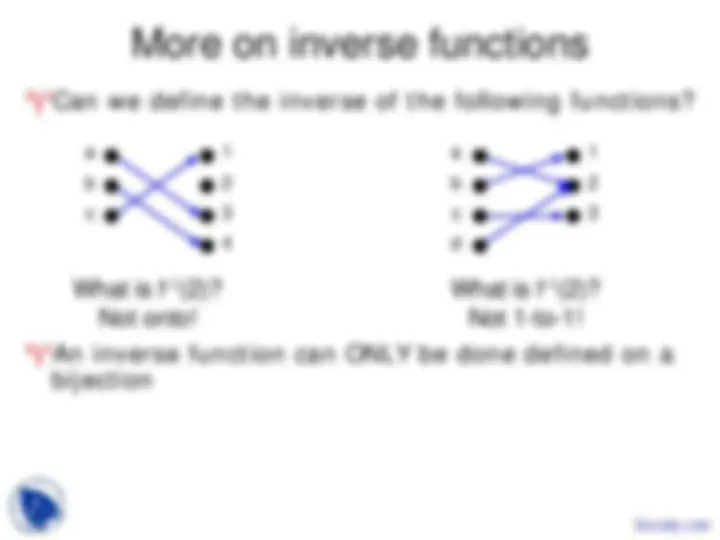
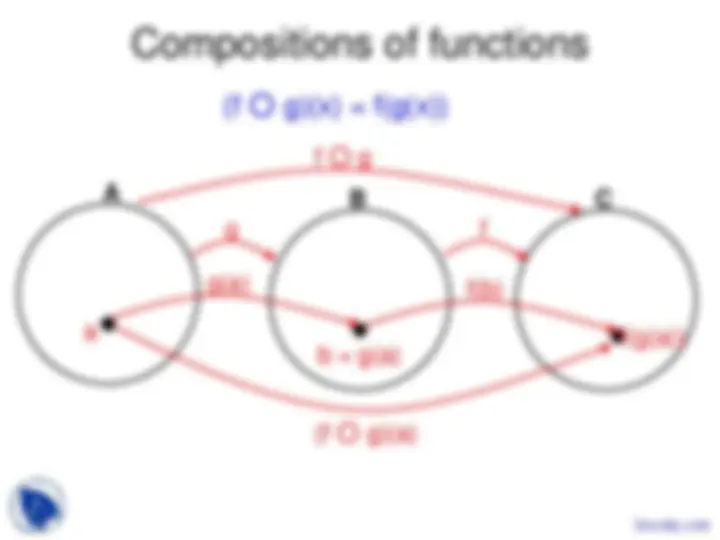
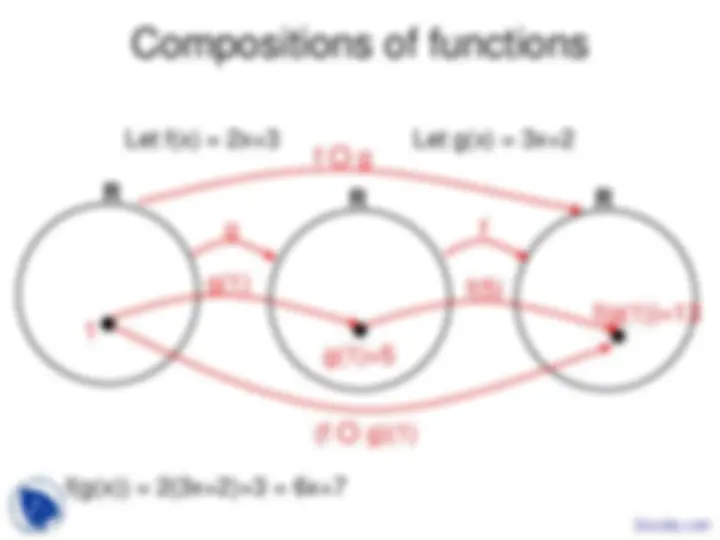
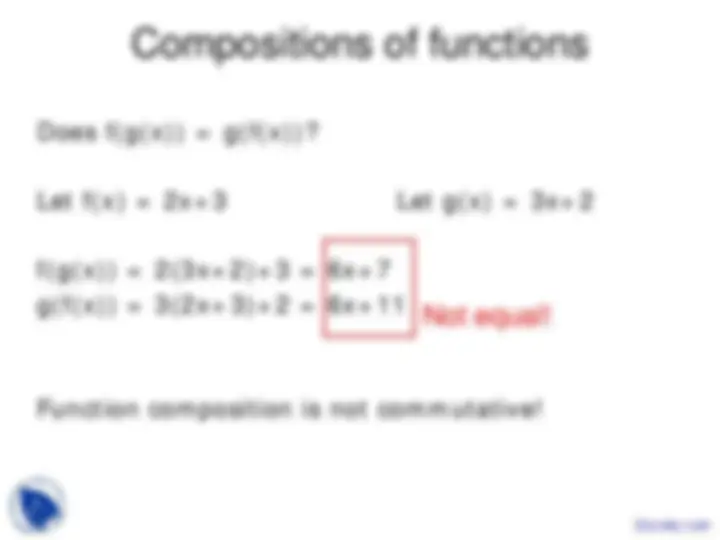
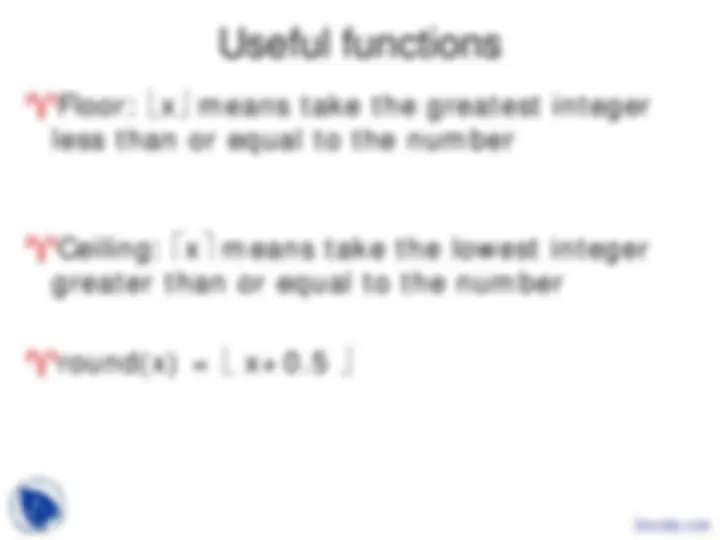
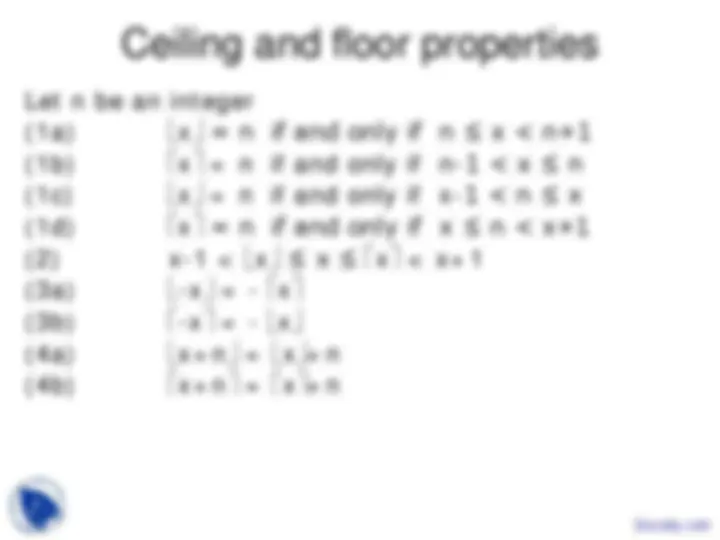
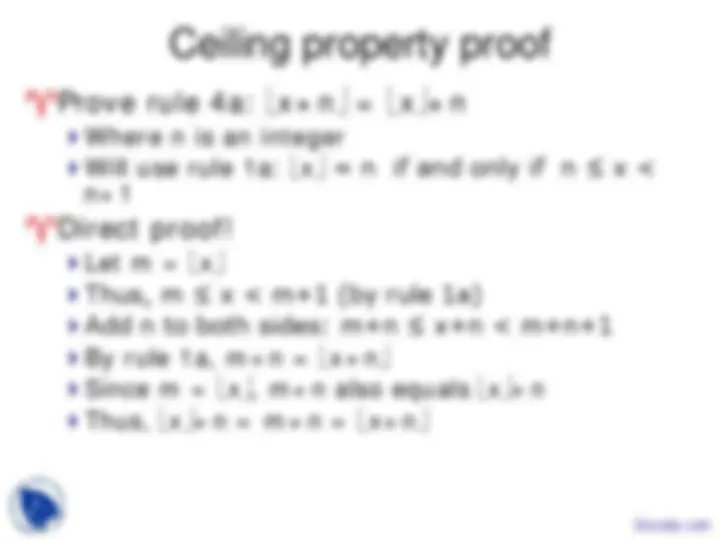
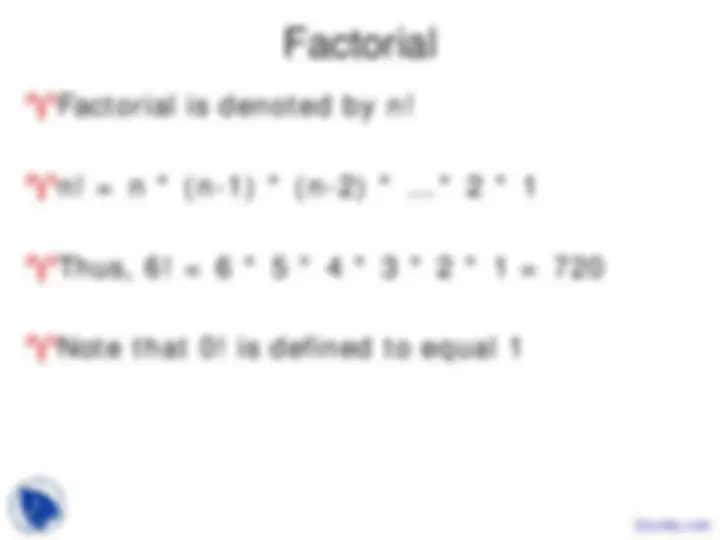
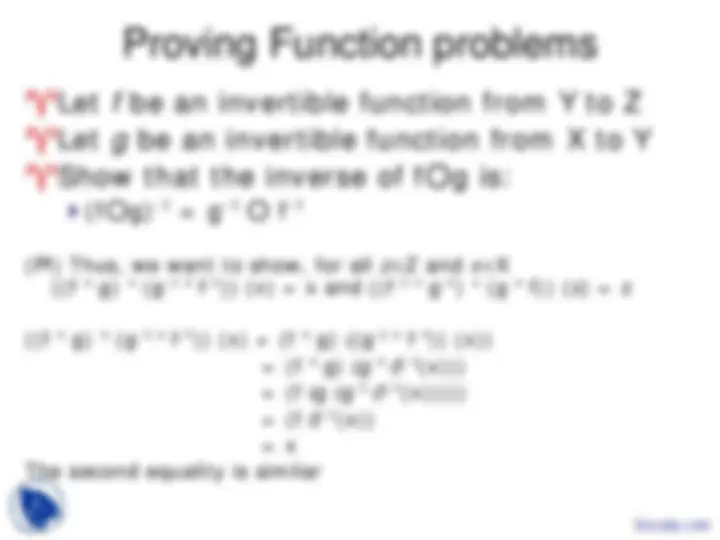


Study with the several resources on Docsity

Earn points by helping other students or get them with a premium plan


Prepare for your exams
Study with the several resources on Docsity

Earn points to download
Earn points by helping other students or get them with a premium plan
Community
Ask the community for help and clear up your study doubts
Discover the best universities in your country according to Docsity users
Free resources
Download our free guides on studying techniques, anxiety management strategies, and thesis advice from Docsity tutors
During the study of discrete mathematics, I found this course very informative and applicable.The main points in these lecture slides are:Set Equality, Proper Subsets, Set Cardinality, Power Sets, 2-Dimensional Space, Ordered Tuples, Cartesian Products, Cartesian Coordinates, Set Operations, Properties of Union Operation, Domination Law
Typology: Slides
1 / 40

This page cannot be seen from the preview
Don't miss anything!

































Two sets are not equal if they do not have the same elements {1, 2, 3, 4, 5} ≠ {1, 2, 3, 4}
If S = {2, 4, 6}, T = {1, 2, 3, 4, 5, 6, 7}, S is a subset of T This is specified by S ⊆ T meaning that ∀ x (x ∈ S → x ∈ T)
For any set S, S ⊆ S (∀S S ⊆ S) For any set S, ∅ ⊆ S (∀S ∅ ⊆ S)
Let R = {1, 2, 3, 4, 5}. Then |R| = 5 |∅| = 0 Let S = {∅, {a}, {b}, {a, b}}. Then |S| = 4
∅ (as it is a subset of all sets), {0}, {1}, and {0, 1} The power set of S (written as P(S)) is the set of all the subsets of S P(S) = { ∅, {0}, {1}, {0,1} } Note that |S| = 2 and |P(S)| = 4
Note that |T| = 3 and |P(T)| = 8
Note that |∅| = 0 and |P(∅)| = 1
Denoted by A x B, and uses parenthesis (not curly brackets) For example, 2-D Cartesian coordinates are the set of all ordered pairs Z x Z Recall Z is the set of all integers This is all the possible coordinates in 2-D space Example: Given A = { a, b } and B = { 0, 1 }, what is their Cartiesian product? C = A x B = { (a,0), (a,1), (b,0), (b,1) }
A x B = { ( a , b ) | a ∈ A and b ∈ B }
Let S = { Alice, Bob, Chris } and G = { A, B, C } D = { (Alice, A), (Alice, B), (Alice, C), (Bob, A), (Bob, B), (Bob, C), (Chris, A), (Chris, B), (Chris, C) } The final grades will be a subset of this: { (Alice, C), (Bob, B), (Chris, A) } Such a subset of a Cartesian product is called a relation (more on this later in the course)
{a, b} ∩ {3, 4} = ∅ {1, 2} ∩ ∅ = ∅
A ∩ U = A Identity law A ∩ ∅ = ∅ Domination law A ∩ A = A Idempotent law A ∩ B = B ∩ A Commutative law A ∩ (B ∩ C) = (A ∩ B) ∩ C Associative law
Formal definition for disjoint sets: two sets
are disjoint if their intersection is the empty set
Further examples
Their intersection is the empty set
Their intersection is the empty set
Formal definition for the complement of a
set: A = { x | x ∉ A } = Ac
Further examples (assuming U = Z )
Properties of complement sets
Identity Law
Domination law
A∪A = A A∩A = A
Idempotent Law (Ac^ ) c^ = A Complement Law
A∪B = B∪A A∩B = B∩A
Commutative Law
(A∪B) c^ = Ac∩Bc (A∩B) c^ = Ac∪Bc^
De Morgan’s Law
Associative Law
Distributive Law
Absorption Law
A ∪ A c^ = U A ∩ Ac^ = ∅
Complement Law
A∩B=B-(B-A)
A ∩ B = A - (A - B)
Proof) A - (A - B) = A - (A ∩ Bc)
= A ∩ (A ∩ Bc) c
= A ∩ (Ac^ ∪ B)
= (A ∩ A c) ∪ (A ∩ B)
= ∅ ∪ (A ∩ B)
= A ∩ B
Let A , B , and C be sets. Show that:
a) (AUB) ⊆ (AUBUC)
b) (A∩B∩C) ⊆ (A∩B)
c) (A-B)-C ⊆ A-C
d) (A-C) ∩ (C-B) = ∅
A function takes an element from a set and maps it to a UNIQUE element in another set